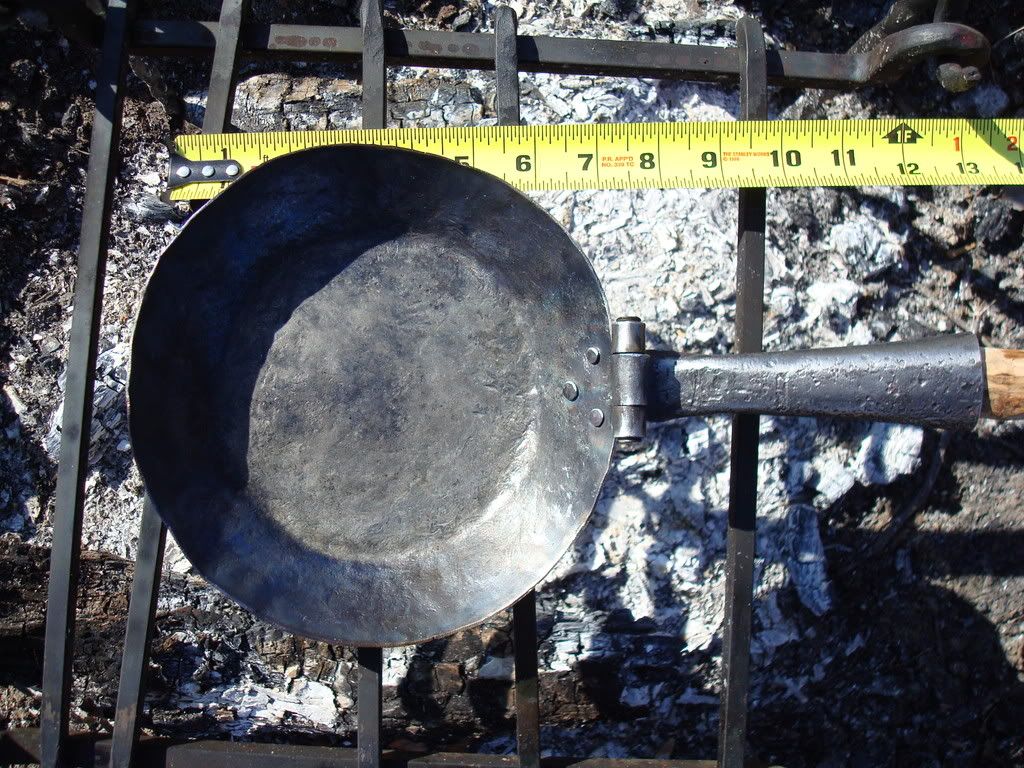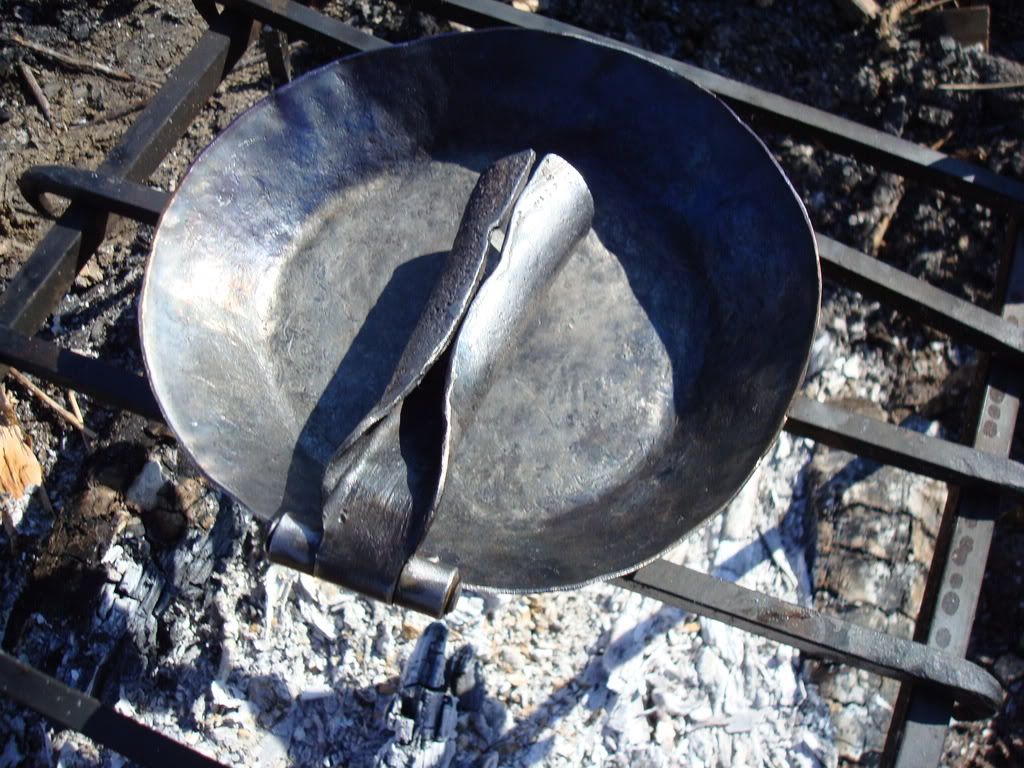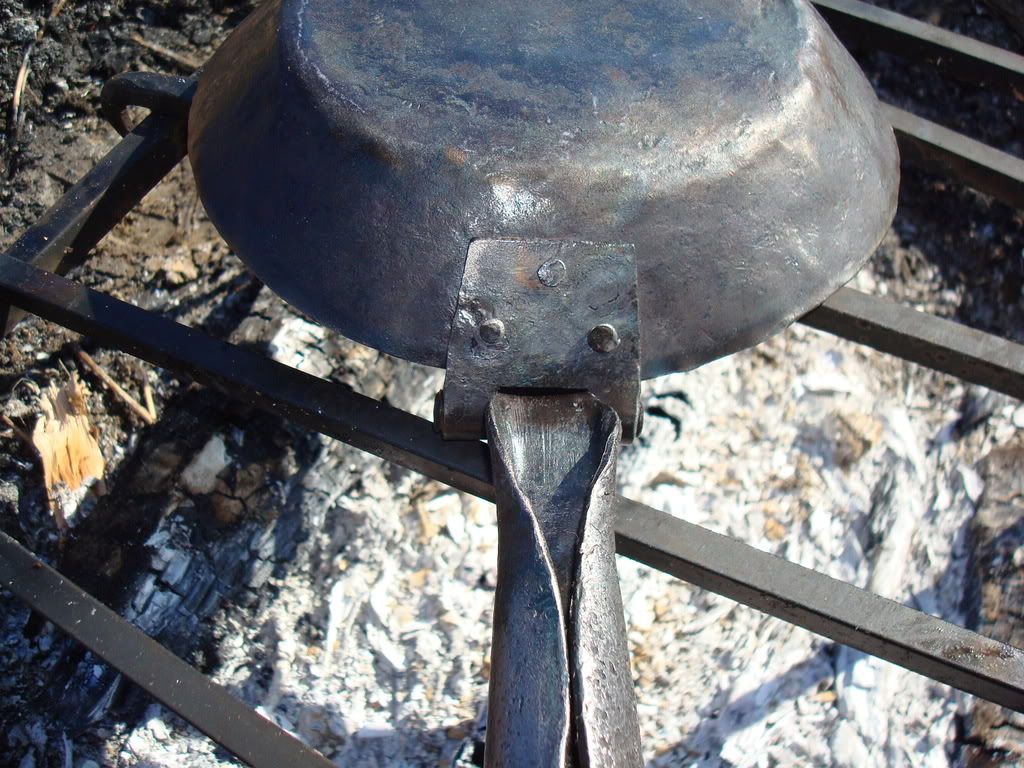I do a lot of cold forming of sheet iron - on the anvil, in special steel swedge blocks, and in wood blocks.
Take a large wood block, and saw/carve a shape into the end grain. You can then hammer down into that shape. Just tweak the shape of the depression you formed in the wood to get the results you want.
Last year I made a replica of a late 1600's to early 1700's French frypan for a friend (fixed handle). To form the sides up, I carved a wide V shaped groove in the end of an oak stump. I then took my round blank of sheet iron, marked a line 1 1/2 inches in from the edge, and then carefully and slowly hammered along that line to ... push ... the metal down into my V groove. Since my V groove was mostly straight, I only hammered about an inch of the pan at a time, and kept rotating it. I only raised that side on the pan a little at a time - instead of trying to do it all at once. When I had the sides high enough, I made another wood form to help smooth and even the sides up. Having a well-rounded peen on my one hammer really helped push the metal down into that V notch, and keep hammer nicks and marks to a minimum.
Of course, this all goes a lot easier if the metal is hot. So the second one I did I forged hot. The metal moved faster and better. But my wood form scorched back a lot. But, in the end, that helped form the wood mold to a better shape to make the slanted sides of the pan.
That classic method to form a skillet using that inside form and big C clamp works, but is not really necessary. That is a way of forming your skillet by hammering it to shape from the outside of the pan. Hammering from the inside of your pan, and down into a V type form does the same thing. It just might take a little more careful work.
The hard part is that you have to "shrink" the outside edge of your metal as you slant it up and in to form the sides. That is the really hard part. It's also best done with heated metal.
And you don't really need a forge or torch to heat up sheet iron to forge. A hot campfire will easily do the trick. The sheet iron is thin enough to heat up pretty easily in a hot campfire. But you might occasionally need to add a little extra air to perk up the fire to burn a little hotter. It will also take a little longer to heat the metal up hot enough, but that gives you a little more rest in between hammering, and more time to think through what you need to do next.
I hope these humble thoughts help. Good luck with your project.
Historical note: A lot of early frypans (with fixed handles) had rounded bottoms. They were much more like a shallow bowl. A small oriental WOK could easily be converted into one. Just remove the loop handles, rivet on a long straight fixed handle, and then rivet on three legs so that you can set it over the coals as you cook in the fireplace of your cabin. Check out the pictures of originals in Collectors Illustrated Encyclopedia of the American Revolution, and Early American Antique Country Furnishings by Neumann.
Just my humble thoughts to share. Take them as such.
Mikey - yee ol' grumpy German blacksmith out in the Hinterlands








